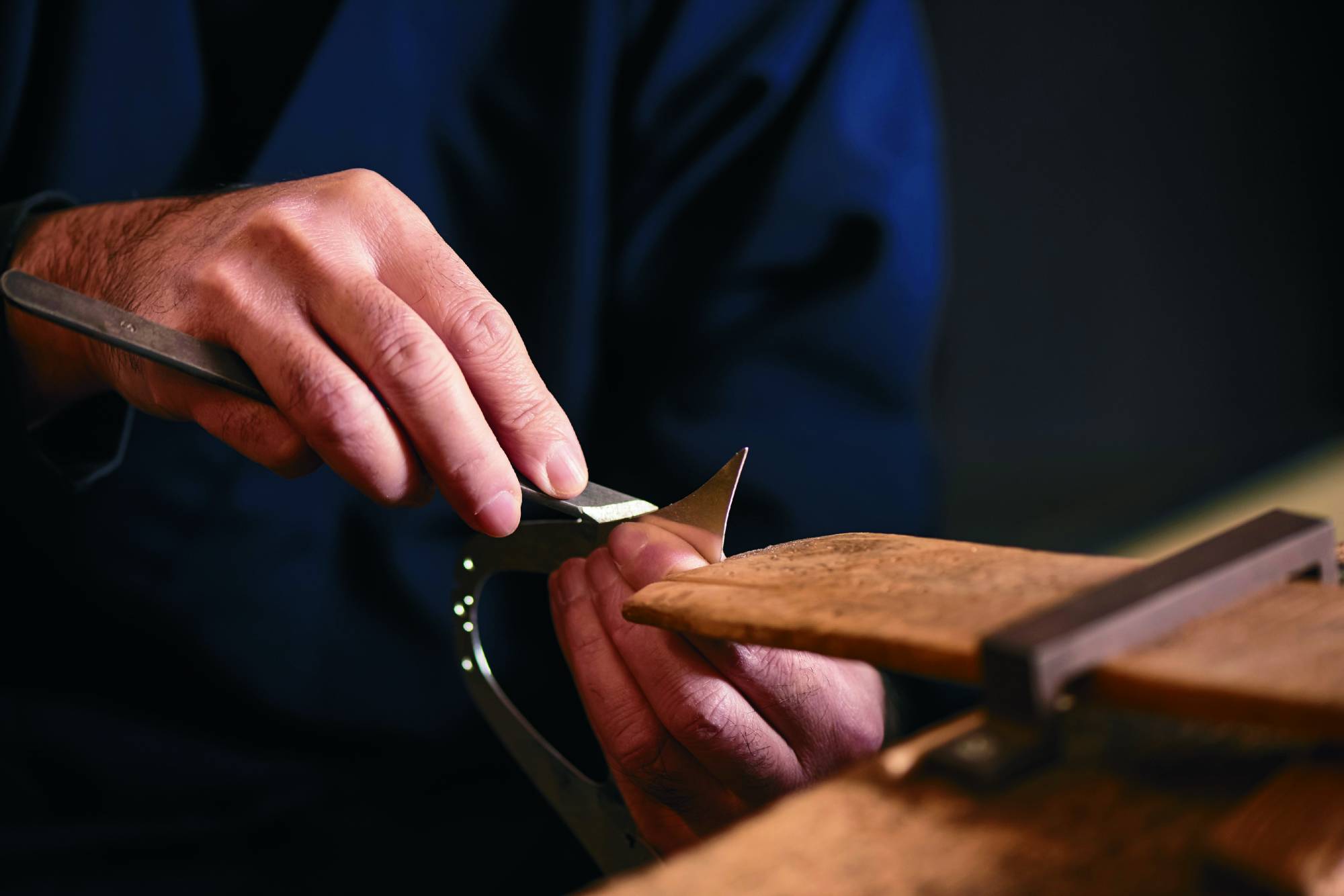1. A silver sheet is hammered out to a predetermined thickness and then cut into as many as 24 different parts.
2. The surface of each component is polished, first with a file and then with a traditional tool called a kisage (shave plane).
3. The kuwagata horns and sword are polished with charcoal to smooth off the minute filing marks. This preliminary polishing is essential. If it is not done, the surface cannot be polished to a high luster at a later stage. Kuwagata are the elements of the maedate (front) that jut out boldly to the left and right. The stag beetle is also known as kuwagata in Japanese, a moniker derived from these stylized horns.



















With your current subscription plan you can comment on stories. However, before writing your first comment, please create a display name in the Profile section of your subscriber account page.